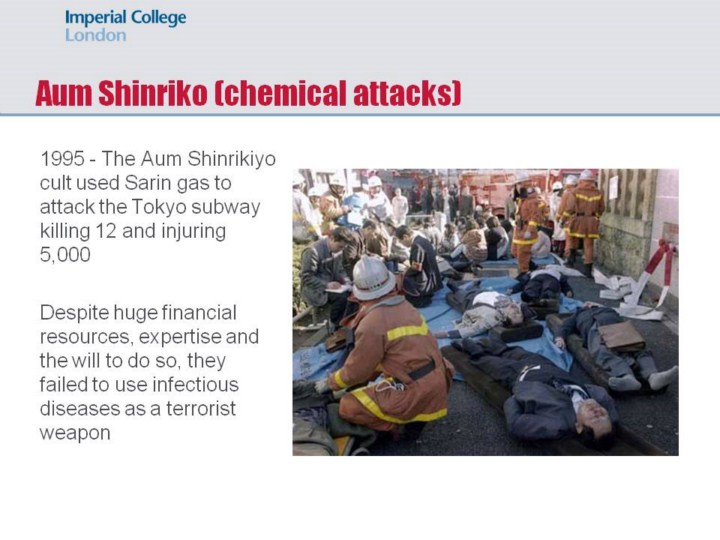| front |1 |2 |3 |4 |5 |6 |7 |8 |9 |10 |11 |12 |13 |14 |15 |16 |17 |18 |review |
 |
The Japanese Aum Shinrikiyo cult made a more serious attempt at bioterrorism by using sarin nerve agent to attack commuters on the Tokyo Subway in 1994 and 1995, killing 12 people and requiring more than 5,000 to be hospitalized. Their choice of chemical over biological terrorist weapons was apparently driven by the cultís failure to develop effective biological weapons. At its peak, the cultís worldwide membership was between 20,000 and 40,000 people, with an estimated net worth in March 1995 of about US$1.5 billion (Olson, 1999). The cult was adept at recruiting educated professionals Ė scientists and engineers Ė even though most were young and largely inexperienced. When police raided their facilities in 1995, they found enough sarin to kill an estimated 4.2 million people (Gardner, 2008). Members of the cult reportedly visited Zaire on the pretext of providing medical assistance to victims of the Ebola virus, with the actual objective of acquiring a sample to culture as a warfare agent (Stern, 1999). So despite the cultís explicitly stated objective of wanting to kill millions, and the cultís size, wealth, technical expertise and organization, they found the technical hurdles of producing bioterrorism weapons prohibitively difficult.
|